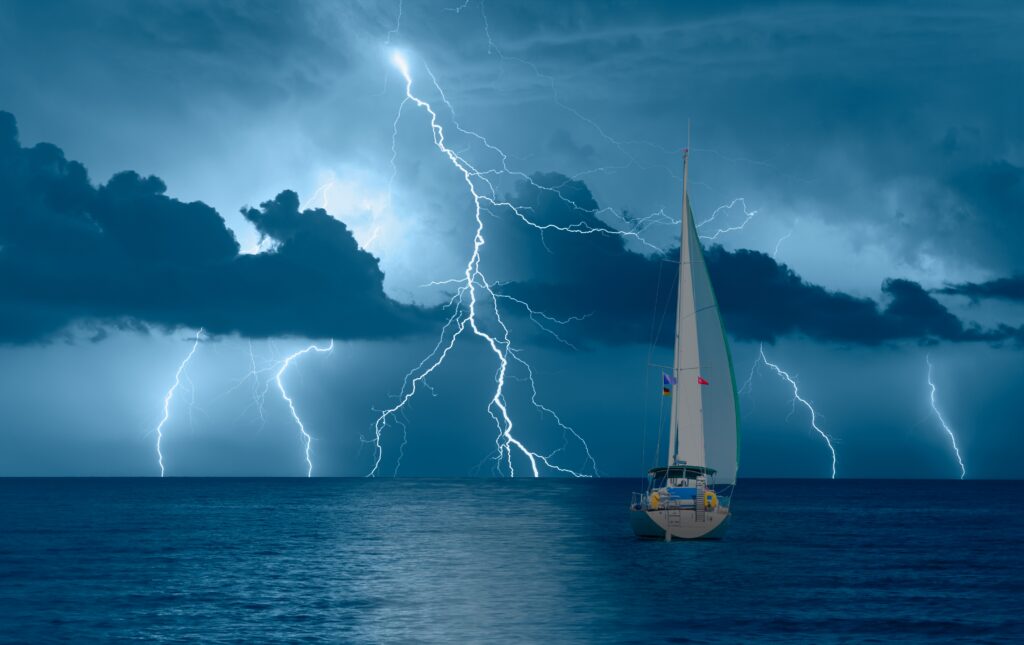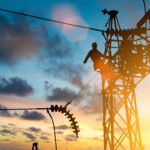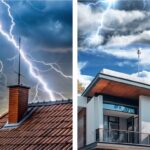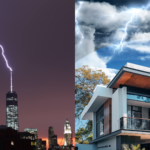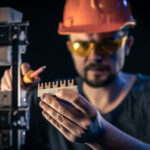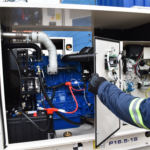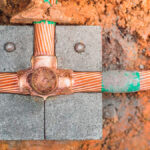The sea, a vast and enigmatic ocean, offers countless opportunities for adventure and exploration, but it also presents natural challenges and dangers. One of the most feared phenomena on the high seas are electrical storms, whose impacts can be devastating for work boats, cruise ships and sailboats. Lightning, with its destructive power and ability to affect electronic systems, represents a significant risk to the safety of crews and passengers. In this blog, we will explore how to protect vessels by grounding sacrificial anodes and how to deal with the danger of lightning during thunderstorms at sea.
The importance of grounding on boats:
During thunderstorms at sea, vessels face a constant threat of being struck by lightning. When lightning strikes a vessel, a significant electrical potential difference is generated between the vessel and the surrounding water. This can cause damage to the electronic and structural systems of the vessel, as well as represent a danger to the safety of the crew and passengers. Proper grounding is essential to safely dissipate that electrical energy, preventing serious damage.
The different types of lightning and their impact on boats:
There are several types of lightning that can affect vessels at sea:
- Cloud-to-ground lightning: These are the most common and represent a significant threat to vessels, as they can directly impact the structure of the ship or elevated elements, such as masts.
- Cloud-to-cloud lightning: These lightning strikes occur between clouds and are less dangerous to boats, but can still pose a risk if the boat is in the middle of electrical activity.
- Cloud-to-water lightning: These lightning bolts originate from a cloud and discharge into the water, posing a potential hazard to swimmers or those who touch exposed metal parts of the boat while in the water.
Grounding in sacrificial anodes to protect vessels:
An effective measure to protect vessels during electrical storms is the use of sacrificial anode grounds. These metal components, usually made of zinc, magnesium or aluminum, are strategically installed on the hull and other exposed metal parts of the boat. In addition to protecting against corrosion, during a lightning storm, sacrificial anodes also act as grounds, dissipating lightning energy safely into sea water.
How sacrificial anodes work as grounding:
When lightning strikes the vessel, the sacrificial anodes act as the path of least resistance for electrical current to flow into the seawater. In doing so, the anodes dissipate the lightning energy, protecting the hull and other metal elements from severe damage. Additionally, by diverting current into the water, anodes also reduce the risk of electrical discharge that could endanger crew or passengers who come into contact with exposed metal items on the boat.
Impact on electronic systems and navigation equipment:
In addition to the physical risk, lightning can also cause serious damage to the boat's electronic systems and navigation equipment. Electrical circuits can suffer harmful surges due to the energy released by lightning. Communication systems, GPS, radars, navigation equipment and other electronic devices may become unusable or require costly repairs. This not only affects the ability to navigate safely but also the ability to call for help in emergency situations.
Safety measures during electrical storms and anode maintenance:
It is essential to have a clear action plan for dealing with thunderstorms. Some important safety measures include:
- Stay in the cabin: At times of increased electrical activity, it is advisable to stay in the cabin of the boat, preferably lying down. Avoid touching metal objects inside the cabin, as they could conduct electricity upon impact.
- Avoid metal objects: Because the human body is a good conductor of electricity, it is essential to avoid touching any exposed metal parts on the boat, such as the rigging of a sailboat or other parts that can act as electrical "ground."
- Disconnect electrical devices: If possible, avoid using VHF and other electrical or electronic devices during thunderstorms. Additionally, disconnecting these devices from the battery circuit can help prevent damage from power surges.
- Lower antennas and metal elements: If there is time before the storm, it is advisable to remove or lower antennas and any other metal elements that rise into the sky. This reduces the chance of attracting electric discharge.
- Inspect the boat after a lightning strike: After being struck by lightning, it is important to immediately examine the bilge and the entire surface of the hull for possible water leaks. The point where the lightning exited can generate holes that cause leaks.
| Boat type | Impact probability | Impact severity |
|---|---|---|
| Sailboats | High | Elevated |
| Work boats | Moderate | Moderate |
| Cruise ships | Moderate | Moderate |
| Small boats | Low | Low |
| Aquatic bikes | Very low | Very low |
In conclusion:
In conclusion, sailing on the high seas during thunderstorms presents significant risks to vessels and their crews. However, by properly installing sacrificial anodes and taking safety measures during thunderstorms, the impact of lightning on vessels can be minimized and safety on board maintained. Risk education and prevention are essential to ensure safe and successful boating, even in higher humidity areas such as the Caribbean and other tropical regions. With the right combination of preparation and caution, boaters can brave the danger of lightning and enjoy a smooth, safe voyage on the world's vast oceans.


